INTRODUCTION
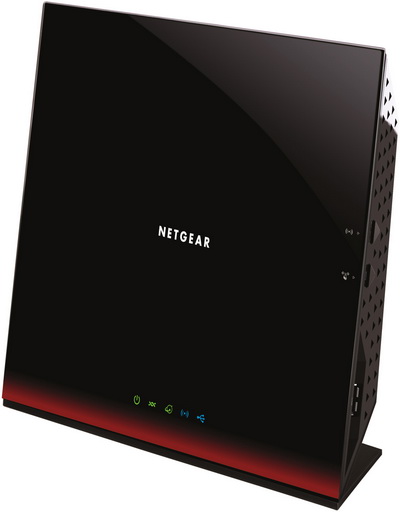
Nothing stays still in the electronics and computer industries at least not for long so something better always emerges not long after even the best model out there has rolled out of the factory. Of course that has its pros and cons since on one hand prices of early models get sliced making them a lot more affordable for mainstream consumers and/or manufacturers (if we're talking about components) but on the other hand you never get to have the best out there, not for long. Because of that it's quite unfortunate that manufacturers haven't focused much in the production of good ADSL/ADSL2+ modem/routers and that's actually something that has been in my mind for many years especially since ADSL/ADSL2+ is still the primary connection type via which people access the internet in many countries including Greece. Well Netgear always seems to come to the rescue with their solutions like the D6300 AC1600 Dual Band Gigabit Modem Router which we've been thoroughly testing for quite some time now.
NETGEAR (NASDAQGM: NTGR) is a global networking company that delivers innovative products to consumers, businesses and service providers. For consumers, the company makes high performance, dependable and easy to use home networking, storage and digital media products to connect people with the Internet and their content and devices. For businesses, NETGEAR provides networking, storage and security solutions without the cost and complexity of big IT. The company also supplies top service providers with retail-proven, mobile broadband solutions for their customers on the go. NETGEAR products are built on a variety of proven technologies such as wireless, Ethernet and Powerline, with a focus on reliability and ease-of-use. NETGEAR products are sold in approximately 44,000 retail locations around the globe, and through approximately 37,000 value-added resellers. The company's headquarters are in San Jose, Calif., with additional offices in over 25 countries. NETGEAR is an ENERGY STAR® partner.
Unlike the Nighthawk R7000 the D6300 is AC1600 compatible meaning it can offer a total WiFi speed of 1300Mbps on the 5GHz band (802.11ac) and 300Mbps on the 2.4GHz band (802.11n) thanks to its 3x3 high-gain Antenna configuration (although 802.11n uses 2x2). Of course it's not as powerful as the AC1900 routers out there but to our knowledge no one has released an AC1900 compatible ADSL2+ Modem Router model to date so this is pretty as fast as it gets in terms of wireless connectivity. Other features include 4x Gigabit Ethernet ports, WAN Gigabit Ethernet port, two USB 2.0 ports, beamforming technology (focuses the transmission of the wireless signal where detected devices are located), WPS with WPA/WPA2-PSK security, Double Firewall Protection (SPI & NAT), DoS (Denial Of Service) attack prevention, IPv6 (Internet Protocol Version 6) support and QoS (Advanced Quality Of Service) support. Overall the D6300 seems to have pretty much everything we hoped to find in an ADSL2+ modem router so let’s see if it really delivers.
SPECIFICATIONS AND FEATURES


PACKAGING AND CONTENTS
The main product features are placed at the front of the box along with a product picture and the company logo.
A product picture used to showcase the rear of the unit is placed on the right side directly beneath the package contents, physical dimensions and warranty information.
The specifications and features of the D6300 are placed on the left side.
Moving at the rear of the box we find a product description in 12 languages along with the features list and a quick comparison between AC1200 and AC1600.
The D6300 is safely wrapped inside a plastic bag and inside a formed piece of cardboard.
Along with the D6300 and its power adapter you are also getting two power cords (EU/UK), FR and IT DSL filters, Ethernet cable, Phone cable, 3 installation guides, connected product catalog and a software CD.
THE D6300
The D6300 measures 205mm in height, 255mm in width and just 77mm in depth. Design-wise many people don't seem to like it but we do mainly because of its front polished fascia and because it doesn't take much horizontal space and that allows you to place it pretty much everywhere just as long as there's no height limitation.
The WiFi and WPS buttons are placed on the right end of the fascia as you can easily tell from the above picture.
Aside the two buttons Netgear has also placed a USB 2.0 port on the right side.
The power, ADSL, Internet, WiFi and USB activity LEDs are placed at the front (not very easy to spot however when turned off).
Most of the device is perforated but as mentioned earlier what really matters to us is its thickness.
Netgear has engraved their logo at the rear of the device.
At the rear we see yet another USB 2.0 port, ADSL phone port, 4 Gigabit Ethernet Ports, WAN Gigabit Ethernet Port, reset button, Power button and the DC in.
You can find the serial number, part number, barcodes and SSID at the base of the D6300.
WEB INTERFACE PART 1
You can download the latest firmware version and the ReadySHARE software from the official Netgear page.
The web interface is identical to that of the R7000 so the first thing you will see is a status screen.
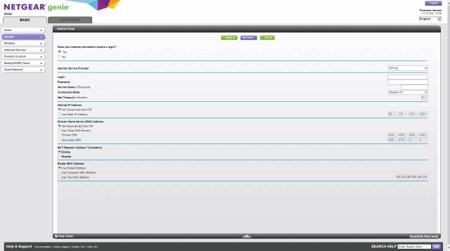
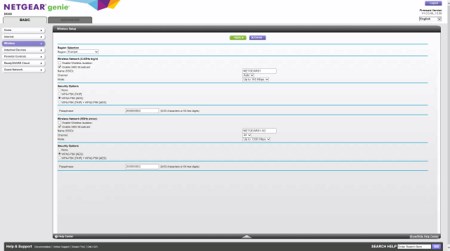
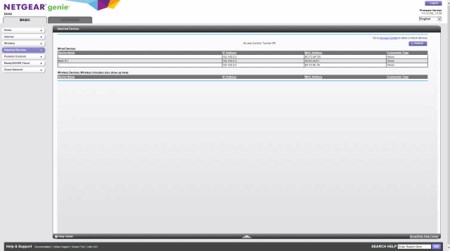
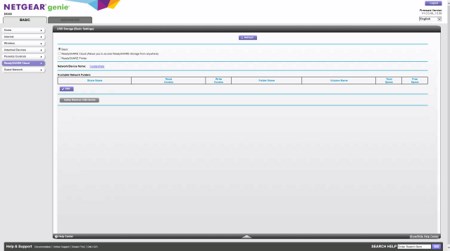
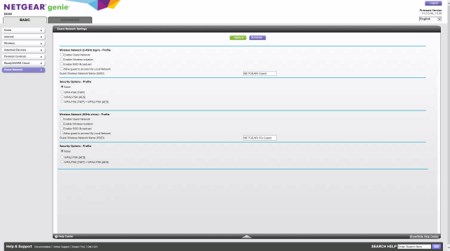
The basic tab allows you to setup your ADSL connection, setup the wireless settings for both the 2.4GHz and 5GHz bands, see what devices are attached onto the D6300, adjust parental controls, share content from a connected storage device and finally you can create a local guest network.
WEB INTERFACE PART 2
The advanced tab also gives you a status screen at first, just more detailed than the one of the basic tab.
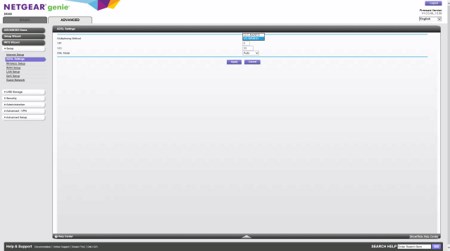
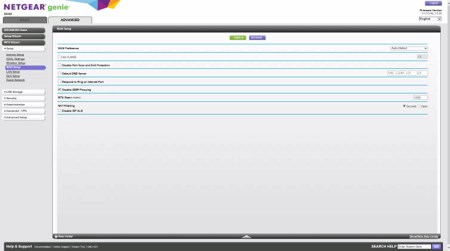

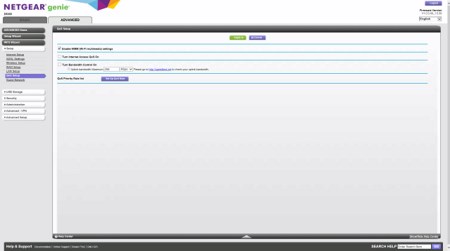
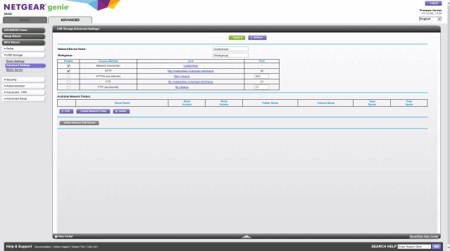
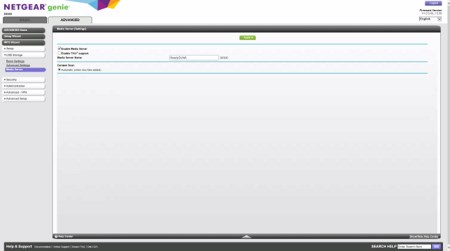
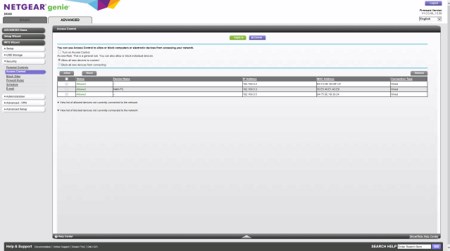
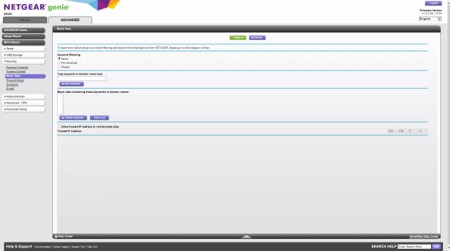
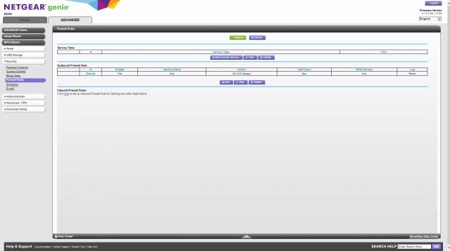
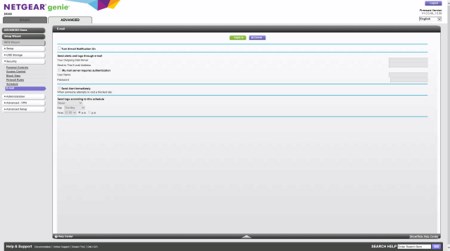

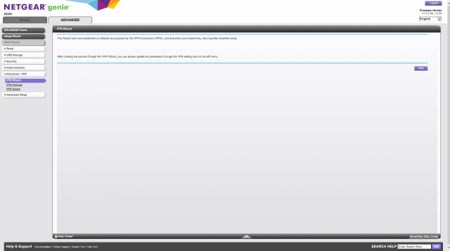
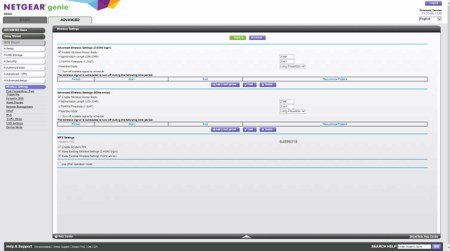
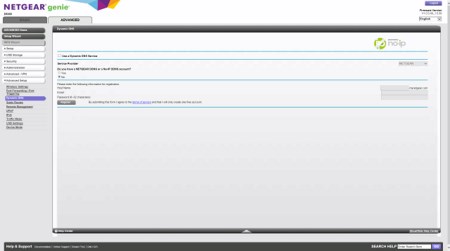
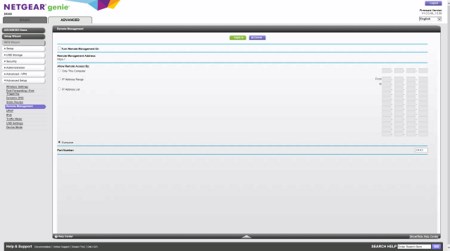
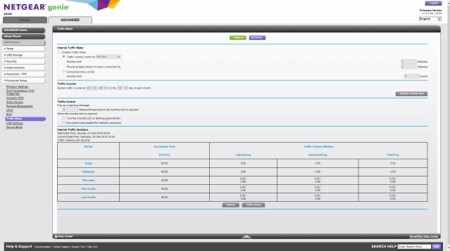
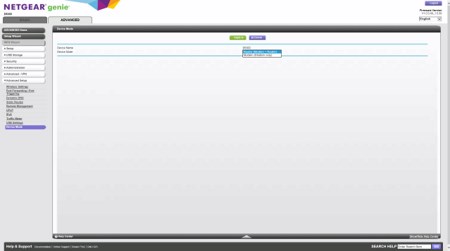
From the advanced section you can control pretty much the same settings as the basic section but you can also adjust extra ADSL settings, change WAN options (DMZ, protections, MTU size), reserve IP addresses for connected devices, adjust QoS for both upstream and downstream, setup FTP/FTPS/HTTP/HTTP access to the storage device connected, setup DLNA media server, block specific IP addresses and sites on specific dates, perform diagnostics, backup your settings, perform firmware updates, enable/disable dynamicDNS service, turn on or off the wireless signal (you can only do that from this tab), enable/disable VPN service, turn remote management on/off, use the traffic meter and finally it allows the end user to setup the D6300 modem router or as a standalone modem.
TESTING METHODOLOGY
To sufficiently test modem/routers we had to change our methodology quite a bit since we decided to make use of the online internet speed measurement application called SpeedTest (we use it with two different destinations/servers). SpeedTest may not be the most "accurate" way to test internet connection speeds since variables change all the time from our ISP to the ISPs of the servers SpeedTest makes use of but the same can be said for every single way one can test internet speed. Bottom line whatever the results always remember that they may not be 100% on the spot. To somehow "help" our results we also record the connected downstream/upstream values each modem/router is able to get into our charts (reboot the modem/router 6 times to get the average upstream/downstream value).
The rest of our testing methodology involves testing the wireless capabilities of the modem/router at hand and thus it's the exact same we use when testing standalone routers. So once again we will be using the networking benchmark by Passmark (v.8) and the QCheck by Ixia to test the bandwidth of the highest available wireless standard/band (5GHz in this case). Our systems are placed 15m away from the router with 3 concrete walls between them while each test (including the ones above) is repeated a total of 6 times after which the average scores are recorded into our charts. Both systems have Windows 7 Ultimate SP1 installed with all the updates until the 1st of March 2015.
TEST RESULTS
CONCLUSION
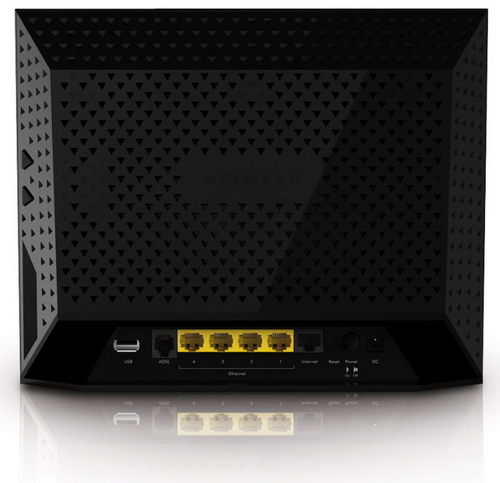
I've been waiting for a long time to see an modem router that can compete with the latest AC1750/AC1900+ routers so when Netgear announced the D6300 i knew we just had to get one to our lab. Unfortunately much like the latest AC3200/AC2350 routers by Netgear which are still not available where we are (the AC2350 model should be soon) it took some time for the D6300 to get here as well but it was well worth the wait. Can Netgear do best? Well i don't see why not since they can obviously marry an AC1900+ router with a ADSL2+ modem so we do expect more from them soon. Still the D6300 offers the best performance we've seen with a modem router to date along with a GUI that offers settings even we can never hope to use so even if Netgear decides to never release an better ADSL2+ model it's ok especially since other internet connection types like VDSL are gaining ground (we really hope they will however). Now i was hoping to see a USB 3.0 port along with external Antennas for improved wireless signal but once again i guess we can't have it all. Finally we did encounter a small compatibility issue with an professional grade IP camera by Linksys since although it works flawlessly with every modem router/router we've used to date it didn't with the D6300 (connection timeouts) but that compatibility issue can go both ways and until we know more we can't really consider it as a drawback.
The Netgear D6300 AC1600 Dual Band Gigabit Modem Router is currently available inside the EU for a price of 164.80Euros (Amazon.de) and although it's not available in the USA still you can find the R6300V2 model which is basically an improved AC1750 router (minus the built-in modem of course) for just USD140 (Amazon.com). After roughly two months of use the D6300 left us with the best possible impressions due to its performance and plethora of available settings. Is it the best ADSL2+ modem router money can buy currently? We can't say that for certain since there are many other models in the market by companies we don't cooperate with. We can however say with certainty that it's the best ADSL2+ modem router we've used/tested to date and that's enough for us to give it our Platinum Award.
 PROS
PROS
- Build Quality
- Design (For Some)
- Wireless Performance (Fastest Modem Router In Our Charts)
- AC1600 Technology (Concurrent 802.11n & 802.11ac)
- User Friendly Web Interface
- Features
- Technologies Used (Beamforming)
- Android & iOS App
- 4 Gigabit Ethernet Ports
- 2 USB Ports
CONS
- Price (For Some)

 O-Sense
O-Sense





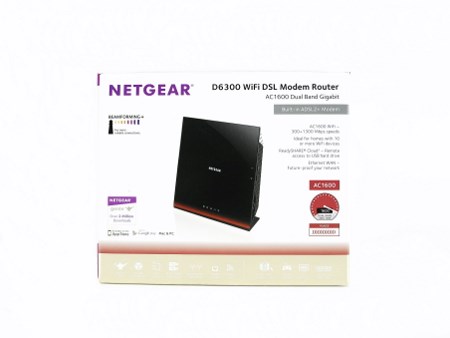
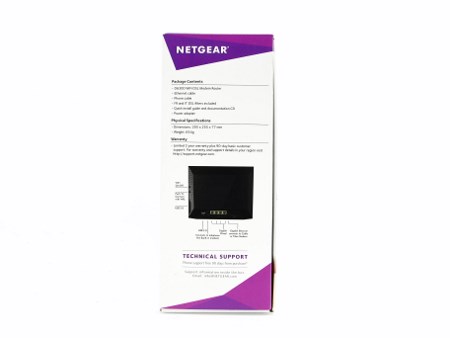


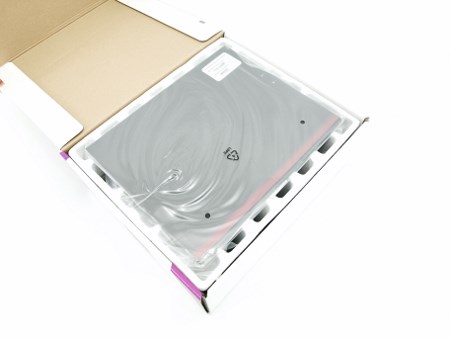
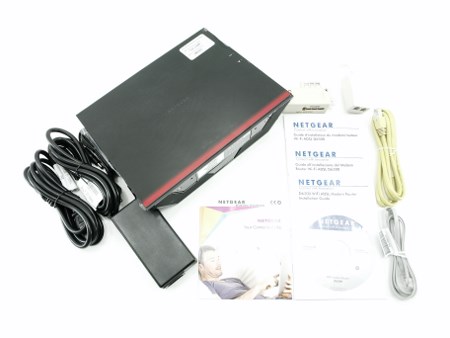
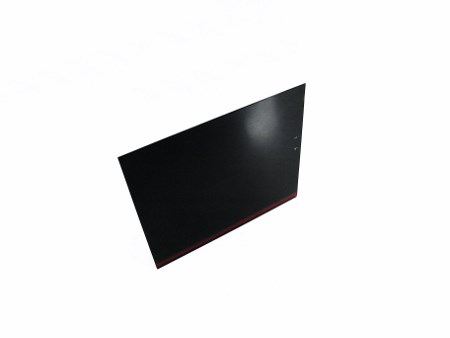

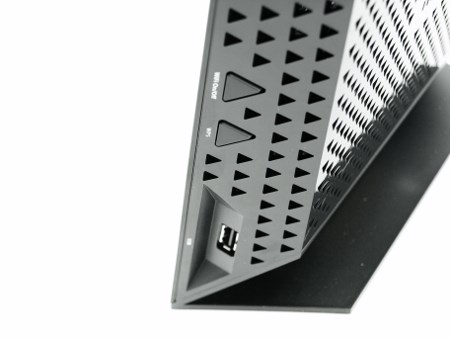
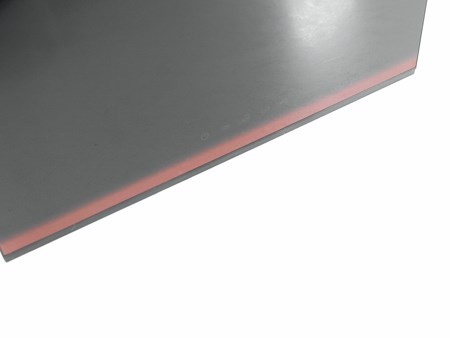
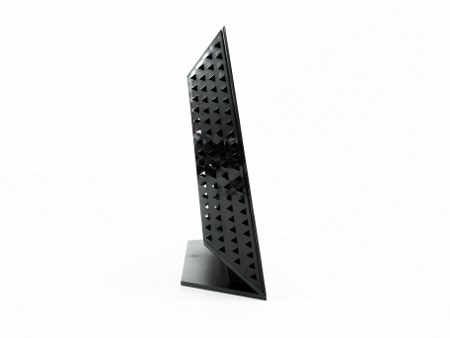
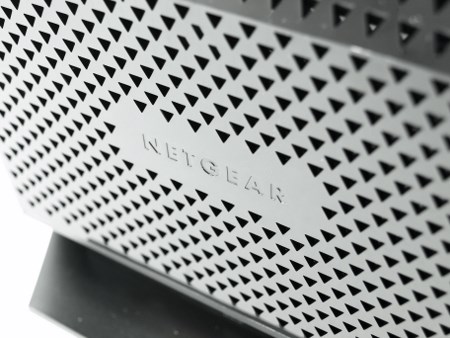
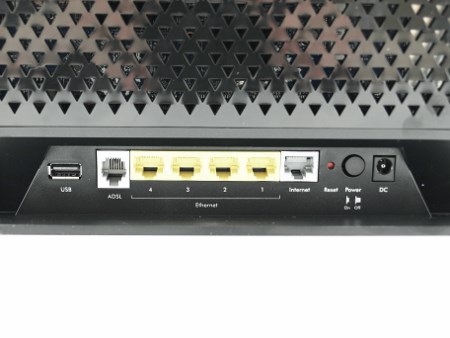
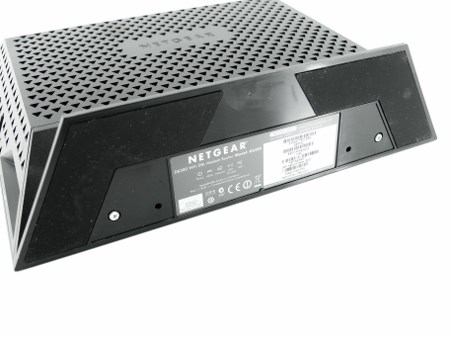

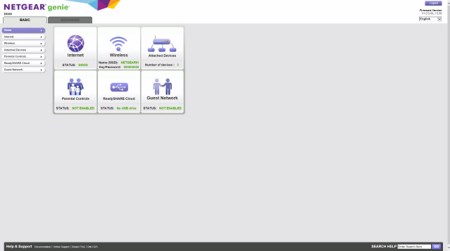
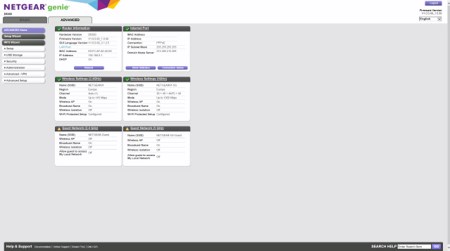


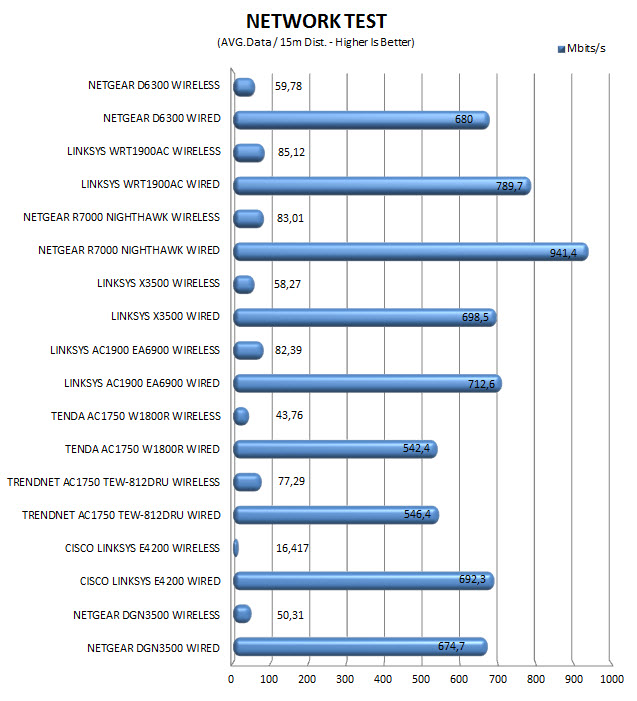
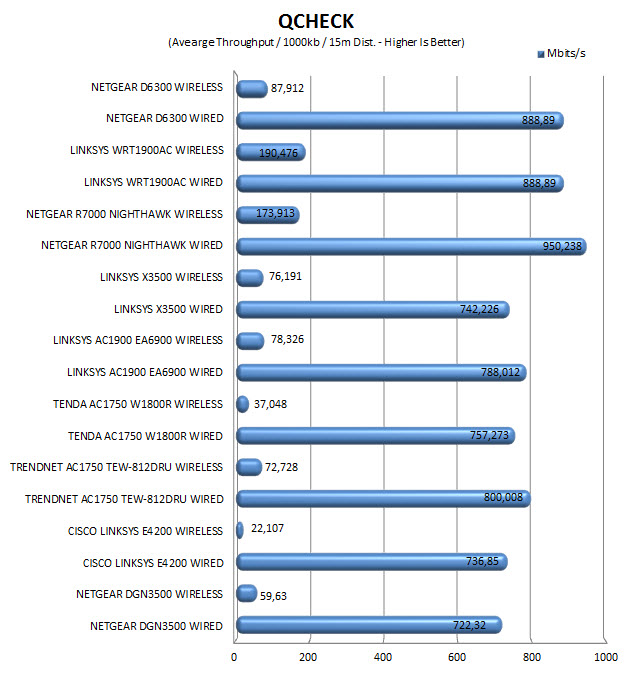


.png)

